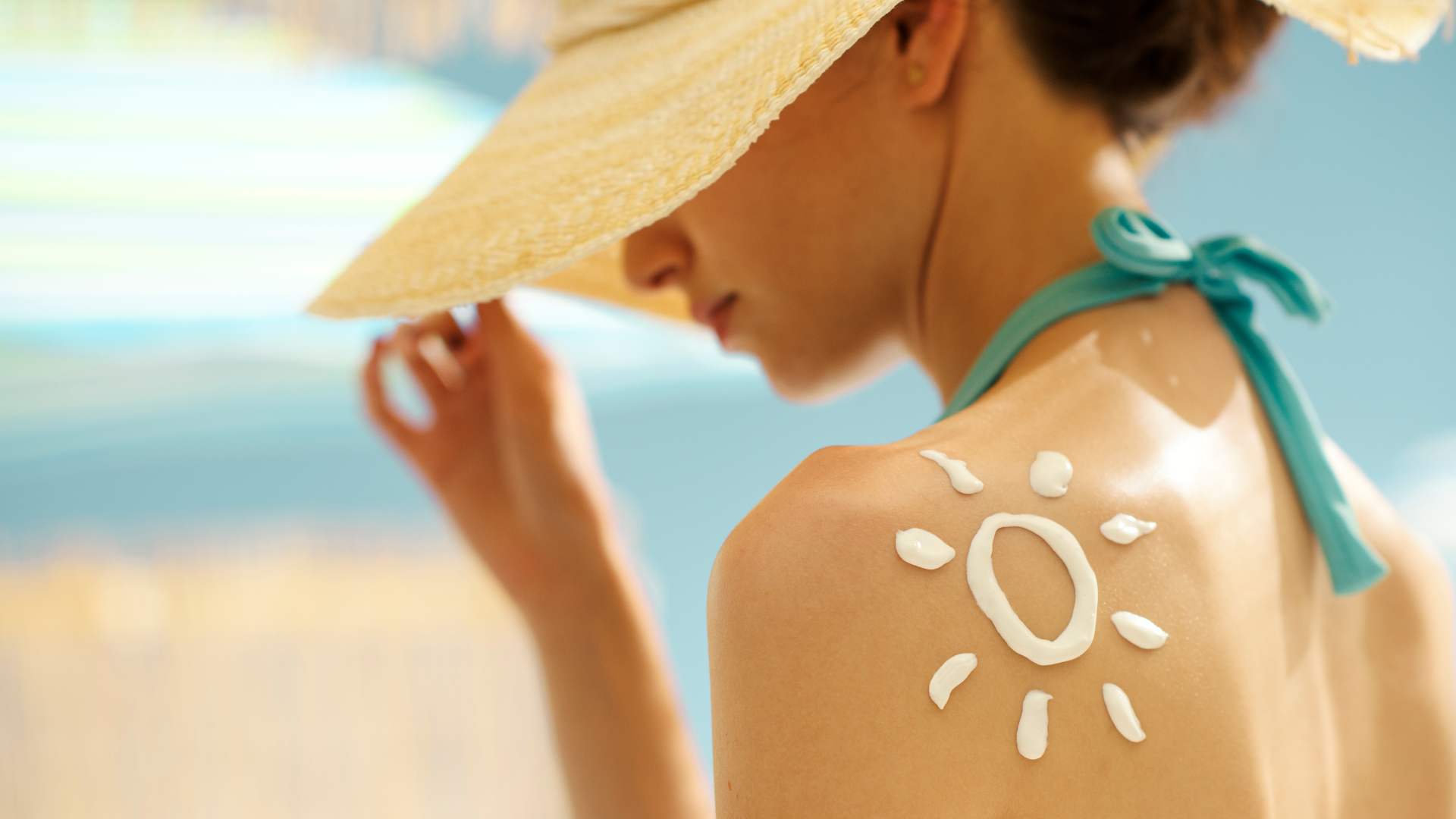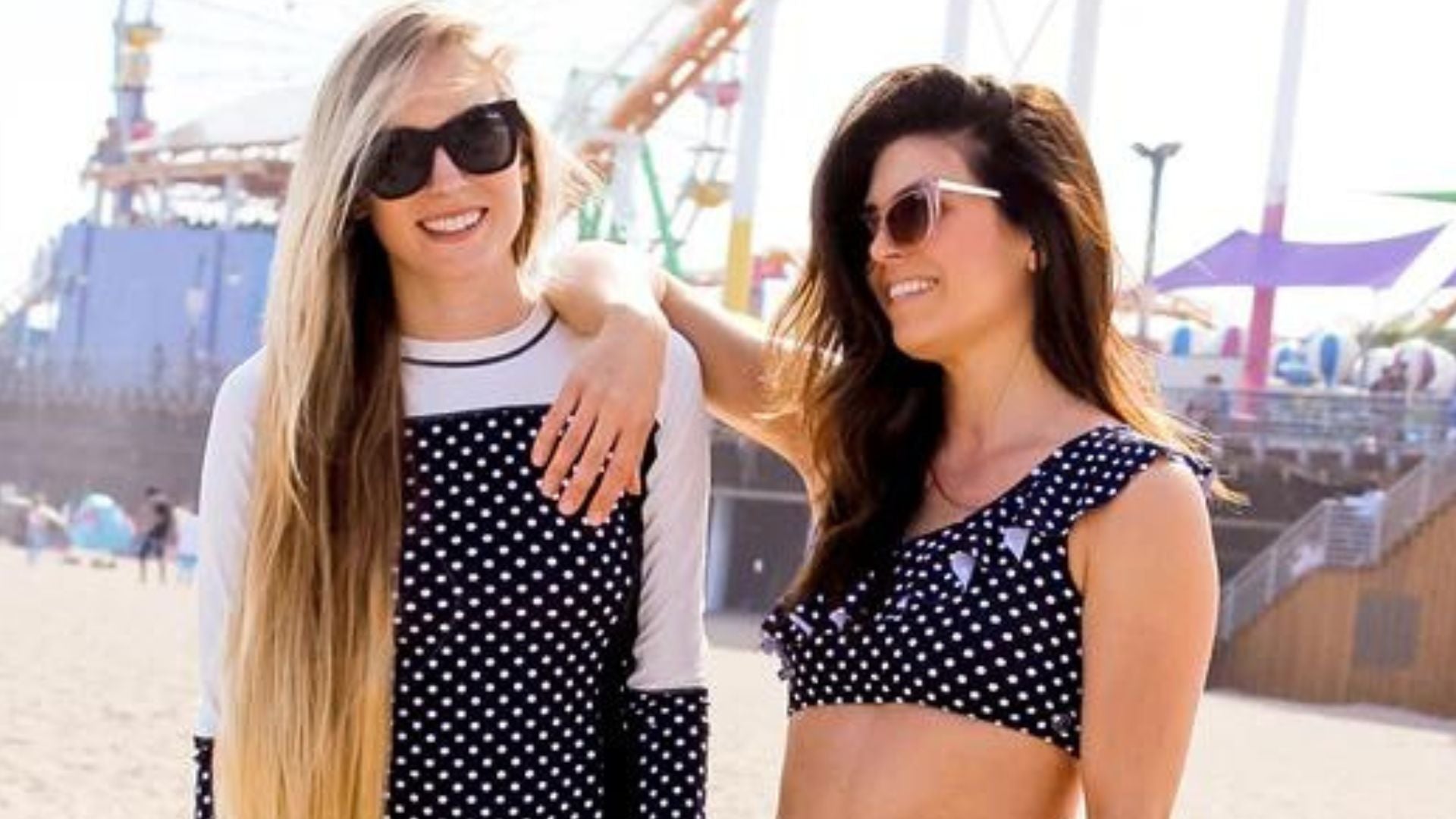
Can you get a tan with sunscreen on?
Yes, you can get a tan with sunscreen on. Why? Because sunscreen only provides partial, temporary protection against the sun's rays. According to Cancer Council Australia, no sunscreen, even when reapplied regularly, offers complete protection against UV radiation.
Quick links:
Why is sun protection important?
The truth about tanning with sunscreen
Staying safe while getting a tan
For your summer beach trips, our UPF 50+ sun-protective swimwear provides an extra layer of defense against harmful UV rays. These stylish pieces look great and help shield your skin. Plus, they complement your sunscreen for comprehensive protection.
Why is sun protection important?
Sun protection keeps your skin healthy and prevents long-term damage. UV-radiation exposure can harm your skin and health in many ways:
- UV rays damage skin cells and their DNA, accelerating aging and increasing your skin cancer risk. This includes all skin cancer types, from common forms such as basal cell carcinoma to more dangerous ones (melanoma).
- Unprotected sun exposure causes sunburn, which hurts and raises skin cancer risk. Over time, it leads to sun poisoning, wrinkles, sun spots, and reduced skin elasticity.
- UV radiation can weaken your immune system, making it harder for your body to fight infections and skin damage. Too much sun can also harm your eyes, potentially causing cataracts and macular degeneration.
Good sun protection keeps skin healthy, stops sunburn, lowers skin cancer risk, and slows visible aging signs. It's essential for skin care, regardless of skin type or tone.
How does sunscreen work?
Sunscreen creates a protective barrier on your skin against harmful UV radiation. There are two main types of sunscreen:
- Chemical-based sunscreens absorb UV rays, converting them into heat. They contain active ingredients that penetrate the skin's surface.
- Mineral sunscreens, which use zinc oxide or titanium dioxide, form a physical barrier on the skin. They reflect and scatter UV rays.
Both of these sunscreen types can offer broad-spectrum protection, which means they guard against UVA and UVB radiation. UVA rays contribute to premature aging, while UVB rays cause sunburn.
The effectiveness of sunscreen is measured by its SPF. The SPF number indicates how well the sunscreen protects against UVB rays, which are primarily responsible for sunburn. For example:
- SPF 15 filters about 93% of UVB rays
- SPF 30 filters about 97% of UVB rays
- SPF 50 filters about 98% of UVB rays
How does tanning work?
Tanning happens when your skin produces melanin in response to UV radiation exposure. Melanin is the pigment that gives your skin its color.
When UV rays penetrate your skin, they damage the DNA in your skin cells. To protect itself from further harm, your skin increases melanin production. This darkens your skin tone, creating what we perceive as a tan.
UVA radiation penetrates deeper into the skin and triggers the production of melanin. UVB radiation primarily affects the surface layers of skin, causing both tanning and sunburn.
The tanning process doesn't happen instantly. It typically takes 24 to 72 hours for melanin production to increase after sun exposure. The intensity of your tan depends on factors such as your skin type, the sun exposure duration, and the strength of UV radiation.
Important note: a tan is actually a sign of skin damage. While many people desire a "sun-kissed glow," any change in skin color from UV exposure indicates that damage has occurred at the cellular level.
The truth about tanning with sunscreen
Sunscreen does not prevent tanning. While sunscreen offers protection against UV radiation, some UV rays still reach your skin, even with proper sunscreen application. This means you can tan, although it will be lighter and take longer.
Here’s how sunscreen affects your tan:
- Sun protection factor (SPF). Sunscreens with higher SPF numbers block more UV rays, resulting in a lighter tan.
- Application. You need to apply sunscreen correctly for full coverage. If you miss spots or use too little, more UV rays will reach your skin.
- Reapplication. Sunscreen gradually wears off. If you don't reapply sunscreen as directed, your protection decreases.
- Water resistance. When you swim or sweat, sunscreen can come off. This makes it less effective at protecting your skin.
- Skin type. People with naturally darker skin usually tan more easily than people with fair skin.
A base tan does not provide significant sun protection. The slight darkening of your skin from tanning only offers an SPF equivalent of about 2 to 4, which is not enough to prevent skin damage.
You can still get a tan when you use sunscreen. It happens more slowly, but you're less likely to burn. As your skin tans at a slower pace, it makes melanin (the pigment that darkens your skin) more evenly over time. This may lead to a tan that lasts longer.
Tanning safety
If you want to tan, you have to protect your skin from damage. Here are some tips to tan more safely:
- Use broad-spectrum sunscreen. Choose a product that guards against both UVA and UVB rays.
- Apply sunscreen correctly. Put on a thick, even layer 15–30 minutes before sun exposure.
- Reapply often. Put on more sunscreen every 2 hours or after swimming/sweating.
- Limit sun exposure. Start with short periods and gradually increase. Check the UV index to avoid peak UV hours (10 a.m. to 4 p.m.). Learn more about the UV index in our complete guide!
- Wear sun-protective clothing. A wide-brimmed hat and sunglasses help shield your face and eyes.
- Stay hydrated. Drink plenty of water to keep your skin and body healthy.
- Use a lower SPF strategically. If you want more color, use a lower SPF (but not below 15). Keep a higher SPF on your face to prevent premature aging.
- Check your skin regularly. Look for changes or unusual spots. If you notice anything concerning, see a dermatologist.
Alternatives to sun tanning
Many people want that golden glow without sun exposure. Here are some options:
- Self-tanners. These products contain dihydroxyacetone (DHA), which reacts with amino acids in your skin to create a tanned appearance. They don't increase your risk of skin cancer or cause sun damage.
- Spray tans. Professional spray tans use a fine mist of self-tanner for even coverage. This is a good option for those with sensitive skin who want quick results.
- Tanning lotions and mousses. These at-home products give you more control over the application. They're good for gradually building a natural-looking tan.
- Bronzers. These cosmetic products provide temporary color without affecting your skin. They wash off easily and are perfect for special occasions.
Note: tanning beds are not a safe alternative. They emit UV radiation and increase your risk of skin damage and skin cancer, similar to direct sunlight.
When using any of these alternatives, you should still use sunscreen daily to protect your healthy skin from UV rays. Choose broad-spectrum sunscreens that guard against both UVA and UVB radiation.
Tan safely with sun-blocking beachwear
Another way to control your tan is to use SwimZip’s sun-blocking beachwear. Limit your sun exposure and make a stylish fashion statement with our selection of UPF 50 swimwear.
Browse our beachwear by style, type, and level of coverage. Some of our popular collections include:
Tanning with sunscreen FAQ
Can you tan with SPF 50?
You can tan with SPF 50 sunscreen, but it happens more slowly. SPF 50 blocks about 98% of UVB rays, which means a small amount still reaches your skin. This results in a gradual tan and strong protection against sunburn and skin damage.
How can I tan without risking skin damage?
To tan with minimal skin damage risk, use a broad-spectrum sunscreen with at least SPF 30, limit sun exposure, and avoid sun during peak hours. Gradually increase sun exposure time, wear protective clothing, and stay hydrated. Check out self-tanning products or spray tans as safer alternatives to achieve a tanned appearance.
Why do I burn so easily even with sunscreen?
You might burn easily even with sunscreen for several reasons.
- If you don't apply enough sunscreen or miss spots, you won't get full protection.
- Sunscreen also becomes less effective over time, so you need to reapply it every two hours.
- Your skin type plays a role too—people with fair skin tend to burn more quickly.
- Certain medications can make your skin more sensitive to the sun as well (such as antibiotics, some acne treatments, and some blood pressure medications).
To protect yourself, use plenty of sunscreen and reapply it regularly throughout the day.
How long does the tan last?
A natural tan typically lasts 7–10 days. Your skin constantly sheds dead cells and replaces them with new ones. As this process occurs, your tan fades. The exact duration varies based on your skin type, the intensity of the tan, and how well you moisturize your skin after tanning.
What is the best time to tan?
The best time to tan is during the early morning or late afternoon, typically before 10 a.m. or after 4 p.m. During these hours, UV radiation is less intense, which reduces the risk of sunburn and skin damage.
Further reading
How long does it take to tan in UV 6?
How long does it take to tan in UV 7?
What is the best UV index for tanning?
What should you know about UV index burn time
What are the symptoms of sun poisoning?
Resource
Can you tan with sunscreen on? - Cancer Council. (2021, December 23). Cancer Council SA. https://www.cancersa.org.au/blog/can-you-tan-with-sunscreen-on/




Leave a comment
This site is protected by hCaptcha and the hCaptcha Privacy Policy and Terms of Service apply.